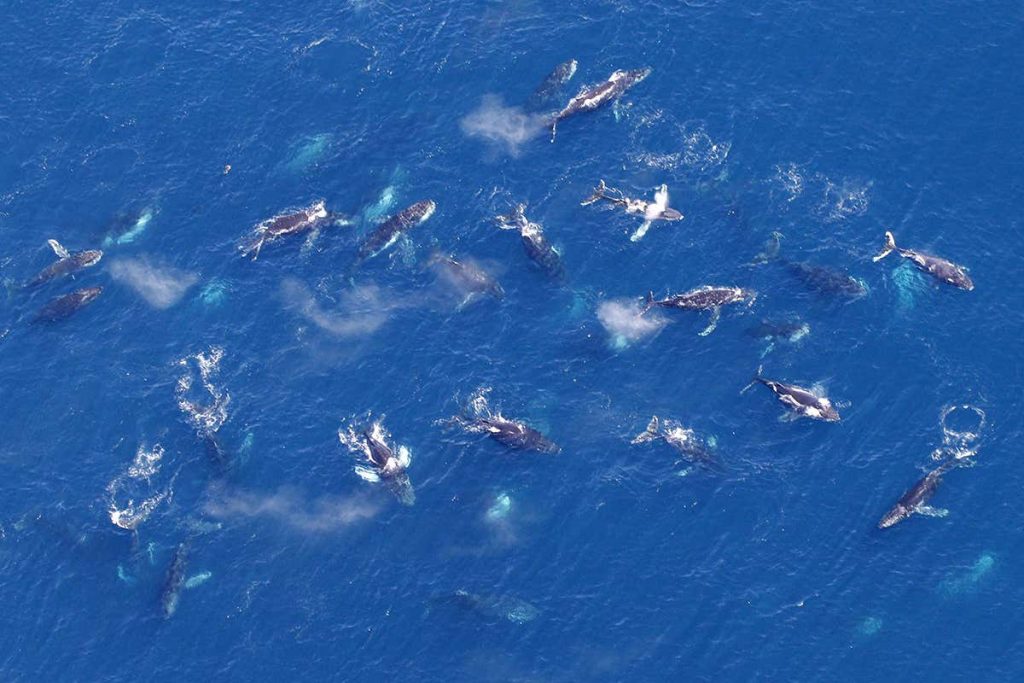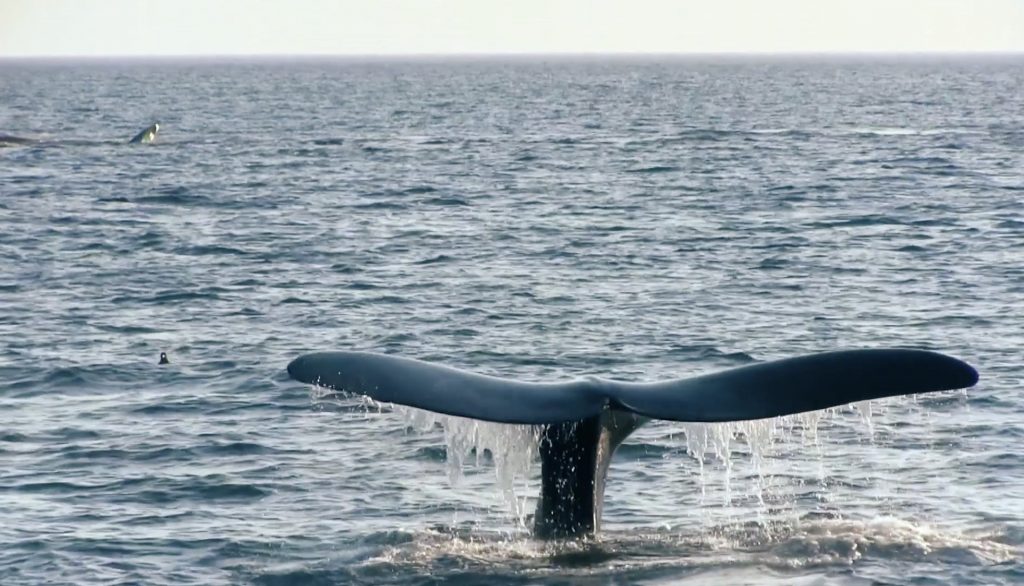Whales are one of the most mysterious inhabitants of our planet. The longest, heaviest, loudest animals on our planet are whales. It is they who have the largest brain and the largest penis. Their length reaches 33 m, weight up to 150 tons. They make the longest and longest migrations. Some whales can stay awake for up to three months and “fast” for two-thirds of the year.

Whales are known for making sounds, due to their melodiousness and repetition, which add up to a semblance of human songs. The most expressive, and therefore more carefully studied by researchers, are the songs of humpback whales. It was revealed that in one population, males sing the same song, but over time it changes. Moreover, certain songs can be borrowed by whales of other populations and thus spread thousands of miles in the ocean like pop music hits.
- White whales are the most “talkative” representatives of cetaceans, because of the variety of sounds made by beluga whales, they are often called “sea canaries”.

- Blue whales can produce sounds louder than a jet engine (188 decibels versus 140 decibels of a jet engine) and can communicate with other whales 1,000 miles away.
- Sometimes the whales are going to “hang out”. So, it was noticed that in the area of Bermuda during migration, two groups of whales sometimes converge. After the “conference” one of these groups goes to the Labrador-Newfoundland region, and the other to the Gulf of Maine.
- Whales breathe air with their lungs, are warm-blooded, feed their young with milk from their mammary glands, and have some (albeit quite a bit) hair.

- When diving, the whale’s pulse drops to ten beats per minute, and blood stops flowing into the vessels of the fins, skin, and tail. It nourishes only the brain and the heart.
- The sperm whale has the largest brain in mammals – up to 8 kilograms. The brain of a blue whale, which is much larger than a sperm whale, weighs only 3 kilograms.
- There is an assumption that ancient whales could give birth on land: in 2000-2004, fossilized remains of a pregnant female and male whale were found in the mountains of Pakistan.

- Whales, dolphins and other cetaceans are also called secondary water: their ancestors in the process of evolution first left the water, and then returned there again.
- Whale tails are as individual as human fingerprints. They are easily distinguishable cuts and furrows, bite scars and spots of brown algae, which create a unique pattern.
- An adult blue whale consumes about a million calories a day, which is equivalent to 1 tonne of krill, a small, shrimp-like crustacean that forms the basis of its diet.

- Female whales bear cubs for 11 months, “babies” are born about 7.5 meters long and weighing 2-3 tons, while the whale egg is not larger than the mouse egg.
- Up to about seven months, the kitten feeds on mother’s milk, drinking about 380 liters daily. By this age, the whales increase to 16 meters in length and weigh 23 tons.
- 20-meter fin whales are the only mammals on earth with an asymmetrical coloration. The right side of the fin whale is white, and the left side is black.
- Whales do not have external ears, they hear with their lower jaws. From it, the sound goes through a special cavity to the middle and inner ear.

- Female whales are longer than males.
- The average lifespan of a blue whale is 60 to 70 years, although according to various sources it is reported as low as 40 years and as high as 110 years.
- The world population of blue whales has decreased in 30 years by a hundred times – to 1,000 heads. According to some scientists, the largest of the cetaceans is simply too late to save. He is doomed. That is why biologists are insistently demanding a significant reduction in whaling.
